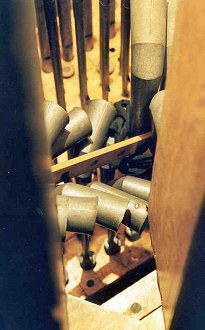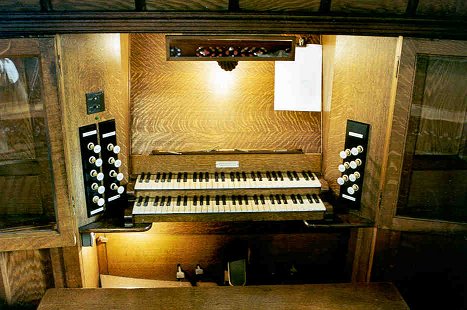Back to list
St John's Church, Neville's Cross, Durham
[NPOR
ref. N14949]
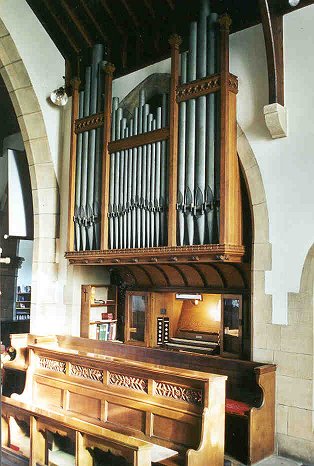 |
The delightful instrument at St
John's, Neville's Cross, was built in 1912 by
the local firm of Harrison
& Harrison. Despite being sited in a tight
chamber in the north
east corner of the church, the organ speaks well into
the church, providing
solid support for this lively congregation.
The original specification
provided just eight
stops, but since then two "prepared for" stops have
been added (the Swell
Echo Gamba in 1915, and the Great Fifteenth in 1976,
this latter utilising
second hand pipework). A Pedal Open Wood and Great
Geigen, for which there
are stopheads, remain prepared for only, and the
provision of pipework
for these stops seems unlikely - in fact the space
for the Pedal pipes
has been taken. An Historic Organ Certificate (Grade II) was awarded by the British
Institute of Organ Studies in 2010. The organ's
centenary was amply celebrated in 2012 with a recital by the church's
organists, with a small exhibition of archival
material - showing that ranks from an earlier organ
were used in the present instrument. |
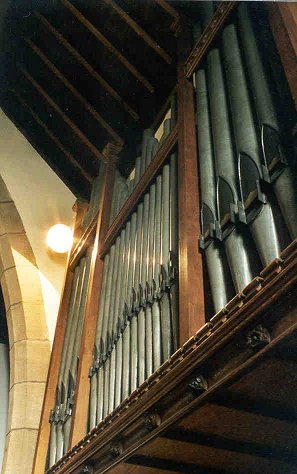 The
Great is founded open the large, firm Open Diapason, which
provides solid
foundation tone throughout the church. The Principal and
Fifteenth which
build upon it are smaller and brighter, resulting in a clear and
lively
chorus. The creamy Claribel Flute is stunning, with exquisite
voicing throughout
its compass. It is sufficient to support the 4' and 2' stops,
useful when
the Open Diapason is just too large. The Contra Dulciana is
beautiful,
and it speaks cleanly down to its bottom note (tenor C) - played
up an
octave it is a useful quiet rank, but the gravitas it adds to
the chorus
is undeniably useful as well.
The
Great is founded open the large, firm Open Diapason, which
provides solid
foundation tone throughout the church. The Principal and
Fifteenth which
build upon it are smaller and brighter, resulting in a clear and
lively
chorus. The creamy Claribel Flute is stunning, with exquisite
voicing throughout
its compass. It is sufficient to support the 4' and 2' stops,
useful when
the Open Diapason is just too large. The Contra Dulciana is
beautiful,
and it speaks cleanly down to its bottom note (tenor C) - played
up an
octave it is a useful quiet rank, but the gravitas it adds to
the chorus
is undeniably useful as well.
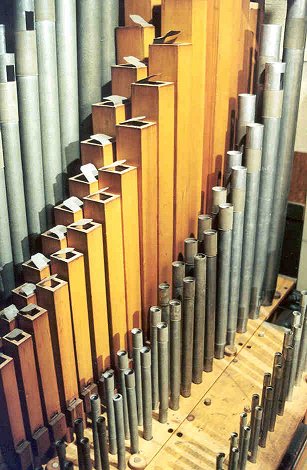 ..........
..........